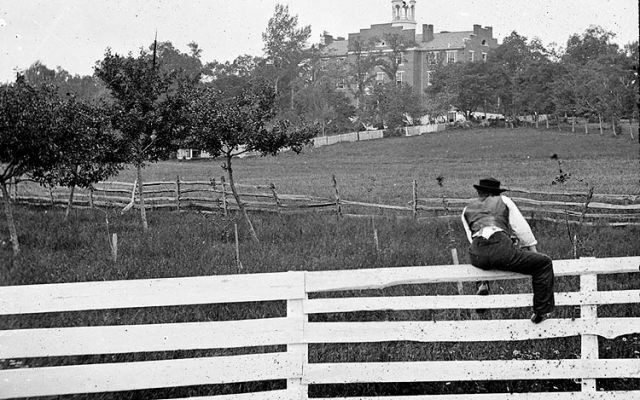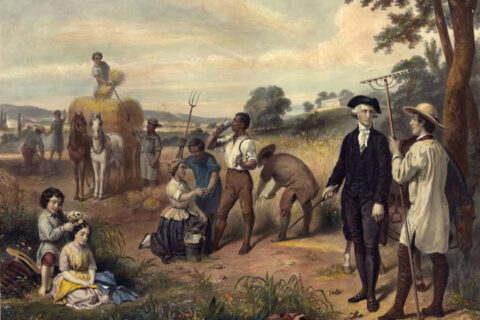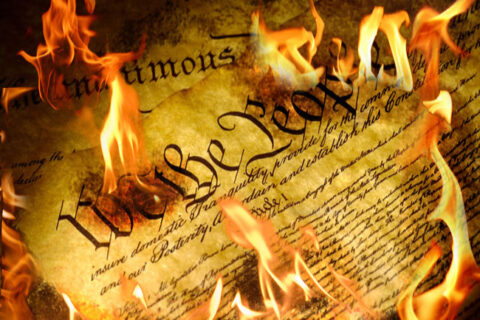Any moment of the discussion of the abhorrent events which transpired during the Reconstruction Era necessitates the addressing of the terror of vigilantism. Easily the most recognizable and repeated situation regarding Reconstruction within a contemporary setting, numerous belligerent organizations arose to allow whites a means of concealed resistance to the upheaval of their societies. The tumultuous generation of bellicose resistance to Reconstruction looms its shadow over the entirety of Southern history. From the Southern Cross in New Orleans to outlaws in lesser populated areas to general rifle clubs, Southern whites utilized a multitude of politically motivated groups to ensure their will within the socio-political sphere, primarily forming in two distinct waves. Despite the notoriety, these organizations committed actions steeped often in maliciousness but also some justified reasoning. The purpose of this essay is to discuss in detail the primary four groups to encompass the militant opposition to Reconstruction, their goals and actions, and their succeeding legacies.
Ku Klux organizations dominated the media buzz regarding such groups at the time. Often utilizing a number of monikers, such as “Kuklux,” “Ku-klux,” and occasionally “Ku Klux Clan,” the general members of the disparate localities often preferred to use “Ku Klux Klan.” Beginning in Tennessee in late 1865 and constituted of Confederate officers seeking fraternity and bizarre ritualism, the KKK, as it quickly became known, grew quickly in popularity among former Confederates. Originally honorable men from the upcountry and Appalachian sections of Dixie, they preferred to keep in tandem with the group’s initial aims. As Reconstruction progressed and the Radical legislation grew more fervent in its extremity, members began using the Klan name for politically motivated vigilance.
By 1867, the Klan became the primary means through which Southerners resisted Reconstruction but also used it to settle scores and commit atrocious crimes. Despite leaders’ attempts to centralize the numerous chapters, most individuals ignored their decrees. Operating primarily in less populated regions, primarily in Appalachia and heavy Scotch-Irish settlements, the Klan infamously terrorized eastern Mississippi, South Carolina’s Upcountry counties, northwestern Texas, most of Tennessee, all but Arkansas’ northwestern corner, and other rural areas where little chance could arise to provide their identities or enforce the law. The Northern media capitalized on the contempt Klansman held for Republicans and Negroes, with various outlets and judicial reports accrediting the KKK with crimes sometimes committed by independent parties. In addition to widespread chaos it left in its wake, the Klan also drew incredible attention largely due to its cryptic imagery and bizarre messages left as threats.
The Klan continued its rein of terror, being empowered by the passage of the Reconstruction Acts of 1867, until 1870. The Klan violence consuming the South grew in such intensity that numerous politicians were murdered. James Hinds, a U.S. Representative of Arkansas, was murdered by the Klan in 1868, one of its most notorious and high profile killings. The Klan even managed to spark the Kirk-Holden War in North Carolina in 1870. The North expressed considerable concern for their Republican constituents in the South, and many Southerners had begun turning against the Klan as early as 1868, hoping to quell Northern Radicals’ desire to strengthen the Reconstruction Acts and further occupation. In 1870, Congress passed the first of three acts known as the Enforcement Acts, the latter two being passed in 1871. These acts strengthened military presence in pro-Klan areas and suspended the writ of habeas corpus. Eventually, the federal government’s crackdown grew to the degree that marshal law was ultimately declared in nine counties in South Carolina’s Upcountry. The last remaining Klansmen across the South soon ceased to exist by the end of 1871.
Knights of the White Camellia remains the most obscure and forgotten about among the four primary resistance organizations of the time. Beginning in Louisiana, the KWC constituted and represented the interests of Deep South Planters. Founded by Alcibiades DeBlanc in 1867, the organization quickly spread throughout the lower South, supposedly reaching as far west as Waco, Texas and as far east as South Carolina. Unlike the Klan, the KWC comprised primarily of men of high stature within society, the antebellum elite. They grew primarily during 1868 as a means of influencing the upcoming presidential election, most whites abstaining from participation in the 1868 gubernatorial election. During this time, their most notorious action was the Opelousas Riot of 1868, one of the bloodiest acts of racial animosity in American history. The KWC, along with the Crescent City Democratic Club in New Orleans, effectively managed to force enough Republicans to stay home such that Louisiana voted for Democrat Horatio Seymour in the presidential election. The group quickly declined thereafter, despite holding multiple conventions and had totally ceased to exist by 1871 alongside the Klan, marking the end of the first wave of violent resistance to the Radicals. Unlike the Klan, the Knights of the White Camellia would later influence the reorganization of resistance a few years later.

The White League arose as a sort of successor to the Knights of the White Camellia. Arguably the most bestial and vitriolic of the groups mentioned in this piece, the White League, much like the Camellia before it, operated primarily within Louisiana, but unlike the Camellia, remained exclusively a product of that state. Founded in 1874 in the Red River Valley, the White League’s first chapter consisted of members of a militia which operated under Christopher Columbus Nash in order to carry out the infamous Colfax Massacre. The White League operated more maliciously than any other group discussed during the time and found quite a good bit of success. The League was heavily influenced by former KWC members and drew in numerous former Confederates and Klansmen members alike, utilizing military tactics in a number of scenarios and openly showcasing their faces and identities in a number of instances. Though they operated most extensively in Red River parishes, the group expeditiously spread throughout the state in 1874 and drew considerable support from local populaces, though exclusively operating within Louisiana. Most well known for the Battle of Liberty Place and the Coushatta Massacre and garnering widespread national notoriety, the group continued to operate until 1876 when the Democrats finally regained power within the Louisiana legislature. It quickly faded out of existence following the state’s Redemption.
The Red Shirts constituted Mississippi and South Carolina’s answers to the White League in Louisiana. Operating openly, much like the White League, the Red Shirts established in Mississippi in 1875. Having effectively dissolved as a party and failing to field a candidate during the election of 1873 due to their weakened state, the Democratic Party reformed and put all their force and resources behind the gubernatorial election of 1875, devising the Mississippi Plan. Operating as the military arm of the Democratic Party in order to bring about their miraculous plan, the group openly paraded through streets, intimidated Republican voters, maintained connections with wealthy financiers who armed them well, and openly sought the attention of newspapers. Utilizing the uniform of a red shirt to appear intimidating to opponents, the Red Shirts carried out a successful campaign. The multi-front strategy of the plan, utilizing disgruntled Mississippians, Democratic statesmen, Red Shirts and similar paramilitary organizations, and intimidation of Republican voters, Mississippi successfully implemented Democratic rule in the state, something that would not be broken until 1991.
South Carolinians, learning of the success of Mississippi’s populace, founded and fielded their own version of the Red Shirts. For this iteration, they used the uniform to mock the “waving the bloody flag” strategy Northerners often employed. Increased violence and lawlessness, as well as ardent corruption, led many to believe the Republicans no longer remained fit to rule; additionally, the Amnesty Act of 1872 granted many of the remaining former Confederates amnesty who had not already received it. Much like Mississippi, the South Carolina Democrats virtually ceased to exist for several years, providing no opposition to the Republicans since 1868. Beginning in 1876, the Democrats reformed and set about ensuring their party would finally regain control of South Carolina. The Red Shirts quickly organized thereafter and set about violently intimidating opposition. Well funded and organized, the South Carolina Red Shirts infamously participated in the massacres and riots of Hamburg, Ellenton, Cainhoy, and Charleston. The Democrats elected Wade Hampton III as their candidate against the Republicans’ Daniel Chamberlain, the incumbent. The race remained inconclusive with both candidates claiming victory and assuming governorship. The tension ultimately concluded with the Compromise of 1876, ushered in under newly elected President Rutherford Hayes. Hayes later declared Hampton the victor. The Red Shirts would again reform in 1878 during the next gubernatorial election. Wade Hampton faced no opposition and was duly elected for a second term.
The story of Reconstruction carries a macabre, grim legacy. Violence permeated socio-political activities during the era, drawing much ire from Northern newspapers and politicians. Discussing the topic necessitates the objective observation of violent paramilitary wings which operated extensively in two separate but interconnected waves. The four primary organizations which carried out politically motivated operations and grisly acts of terror, as well as general crime, influenced the outcome of the events which transpired during the era. Initially causing the direct strengthening of Radical legislation, the later groups contributed directly to the Radicals’ downfall. A fading legacy which still exists today, the reorganization of similar chapters may certainly arise. Though should the context for such an instance occur, it would certainly constitute a most grievous and undesirable situation for the Southern people.
“The White people of the South are the greatest minority in this nation. They deserve consideration and understanding instead of the persecution of twisted propaganda.” –Strom Thurmond






Remember the Reconstruction, never forget who was really responsible
The North is reeling under the political disturbances caused by the virus and the shooting.
Their state governments and the government in Washington have show their moral and political weakness.
Unfortunately for us, we don’t have the political machinery to take advantage of the circumstances.
We also don’t have state governments who will stand up to the Northern SJWs and the politicians who back them.
Same war, Same people.
Yes, James – same war, same people – for the 4th or 5th time already.
The resistance groups mentioned were not terrorist organizations. They countered the terrorism unleashed by the Reconstruction.
I appreciate you writing this article. Great stuff. It brought to mind stories I heard growing up in Anderson County South Carolina about Manse Jolly. Legend has it he was a one man wrecking crew during reconstruction and was a hero to Andersonians. There has been a book written about him. I encourage anyone to read about him. Especially those from Anderson, Pickens or Oconee counties.